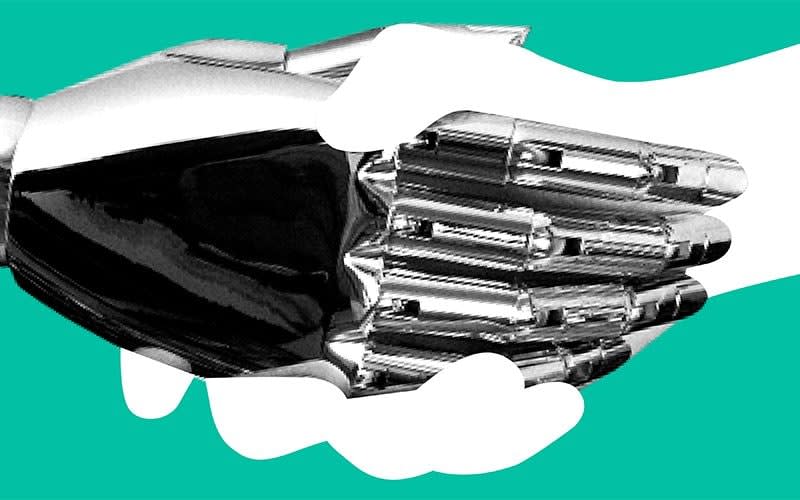Blue Prism shares surge as more sign up for robotic workforce

Shares in Blue Prism surged by a fifth on Thursday after the software company revealed customer numbers almost doubled last year, selling technology it believes could help lift Britain’s productivity levels.
Blue Prism, listed on London's junior AIM market and based in Warrington, said revenue had almost doubled in the year ended October 31, to £101m from £55m.
News of its accelerating growth propelled shares 22pc higher, to £15 – a five-month high.
During the year Blue Prism spent £166m on hiring new staff and on sales and marketing, causing its losses before tax to widen to £81m from £26m.
However, executive chairman Jason Kingdon said such investments were "increasing momentum" for the company, helping it to grow its customer base to 1,677 from 971 at the end of the 2018 financial year.
He said the company did not view the spend as massive, but “measured”.
“How many companies create a technology and sell it to 130 countries around the world? And to do it in a four year period, I think it's pretty measured,” Mr Kingdon said.
Blue Prism's software, which allows companies to use robots instead of staff for back office tasks including form filling, is used by names such as John Lewis and the University of Sydney.
Such tools are seen as offering a solution to the productivity crisis which has engulfed rafts of countries including the UK.

The latest figures from the Office for National Statistics suggest Britain's output per hour worked crept slightly higher in the third quarter of 2019 after having slipped for four consecutive quarters, but productivity levels are still significantly lower than before the financial crash.
Tej Parikh, from the Institute of Directors, said this was because uncertainty had "sapped business leaders’ confidence to invest in the equipment and technology they need to drive productivity growth".
Mr Kingdon said early adopters were already using its systems, though. He said Blue Prism’s technology was still at the start of its journey and “that's why it's not reflected in productivity figures yet”.
“This technology has taken a while to come about, the fact that we've taken as our model the way the human being operates – reading the screen, understanding what it's operating with,” he said.
“There's been a technical blockage in terms of getting automation of this scale in services, and now we're through that, that's when you'll start seeing these radical changes.”
He said the company believed businesses would come to rely on “digital workers”, robots which would work alongside humans.
“We think there's a future where there's one third robots, one third humans and one third core IT and that will be the typical mixture for an organisation,” he said.

 Yahoo News
Yahoo News 